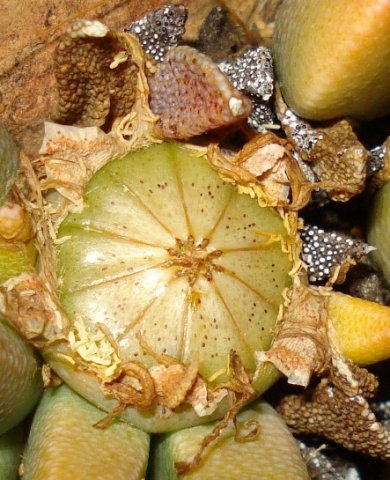Rabiea albinota shiny capsule

Author: Ivan Lätti
Photographer: Judd Kirkel Welwitch
Up close, the bulging fruit capsule of Rabiea albinota resembles a birthday cake for a Karoo children party, although no candles. The haphazard demise of calyx lobes and other upper parts frees the valves from impediments when dehiscing time arrives, meaning when they are to open for seed dispersal. For now, the discarded calyx looks like the marks left by premature birthday party fingers in the icing.
The suture lines on top of the fruit indicate where the ripe fruit will dehisce later. From seven to ten locule valves top the conical fruit structure, which is about 1,2 cm in diameter when mature.
Around the capsule the visible leaves of the plant have aged to various stages. Only the fleshy ones in dull yellow green are still in service. The shrivelled ones are reddish, brown and black, past their useful stages. The dry or drying skins upon which the leaf surface papillae have gained in their visual impact, illustrate the phases of decay that end in white dots on black leaves (Smith, et al, 2017; Smith, et al, 1998; iNaturalist; https://pza.sanbi.org; https://www.worldfloraonline.org).

